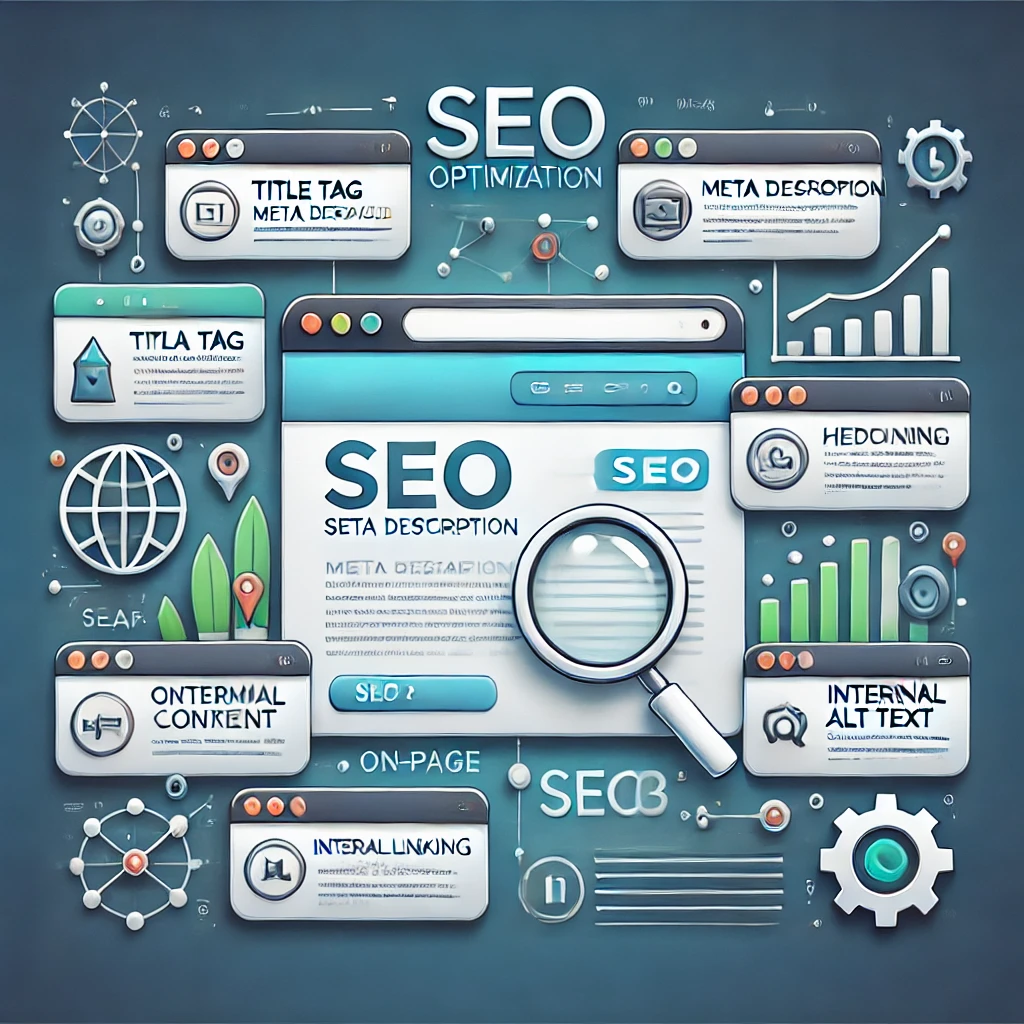Getting Started:
In the ever-evolving world of digital marketing, on-page optimization plays a crucial role in determining a website’s success. Whether you’re a business owner, a blogger, or a digital marketer, understanding and implementing effective on-page SEO can significantly improve your search engine rankings and user experience.
What is On-Page Optimization?
On-page optimization, also known as on-site SEO, refers to the strategies and techniques applied directly on a webpage to enhance its visibility in search engines. This includes content quality, HTML source code, and website structure improvements. Unlike off-page SEO, which focuses on external factors like backlinks, on-page optimization ensures that your website is well-structured, user-friendly, and relevant to search queries.

Key Factors of On-Page Optimization
To get the best results, you need to focus on multiple on-page elements. Let’s explore the most important ones:
1. High-Quality Content
Content is the foundation of on-page SEO. Here’s what makes content effective:
- Relevance: Ensure your content aligns with users’ search intent.
- Uniqueness: Avoid duplicate content; provide fresh insights.
- Readability: Use simple language, short paragraphs, and engaging formats.
- Keyword Optimization: Use primary and secondary keywords naturally throughout your content.
2. Title Tags & Meta Descriptions
- Title Tags: Your page title should be compelling, keyword-rich, and under 60 characters.
- Meta Descriptions: A well-crafted meta description (under 160 characters) can improve click-through rates (CTR) by providing a brief yet engaging summary of your page.
3. URL Structure
A clean and structured URL helps both search engines and users understand your page’s content. Example:
- ✅ www.example.com/on-page-seo-tips
- ✅https://digtallygayatri.com/
- ❌ www.example.com/123xyz?=id=45
4. Header Tags (H1, H2, H3, etc.)
Organize your content with header tags to improve readability and SEO:
- H1: Main title (used once per page)
- H2 & H3: Subheadings for better structure and keyword placement
5. Image Optimization
Search engines can’t “see” images like humans do, so optimizing them is essential:
- Use descriptive file names (e.g., on-page-seo-tips.jpg)
- Add alt text to describe images
- Compress images to improve loading speed
6. Internal & External Links
- Internal Links: Link to other relevant pages within your site to improve navigation and reduce bounce rate.
- External Links: Linking to authoritative sources can enhance credibility and SEO value.
7. Mobile-Friendliness
Google prioritizes mobile-friendly websites. Ensure your site has:
- A responsive design that adapts to all devices
- Easy-to-read text and clickable elements
- Fast-loading pages
8. Page Speed Optimization
A slow website frustrates users and hurts rankings. Improve speed by:
- Compressing images
- Enabling browser caching
- Using a Content Delivery Network (CDN)
- Reducing unnecessary plugins and scripts
9. Schema Markup (Structured Data)
Schema markup helps search engines understand your content better, improving your chances of appearing in rich snippets (e.g., FAQs, ratings, and reviews in search results).
10. User Experience (UX) & Engagement
Search engines prioritize user satisfaction. Improve UX by:
- Ensuring easy navigation
- Using clear CTAs (Call-to-Action)
- Reducing intrusive pop-ups
- Encouraging comments and engagement
Final Thoughts
On-page optimization is essential for achieving higher search rankings and providing a seamless user experience. By focusing on quality content, technical improvements, and user engagement, you can create a website that both users and search engines love.